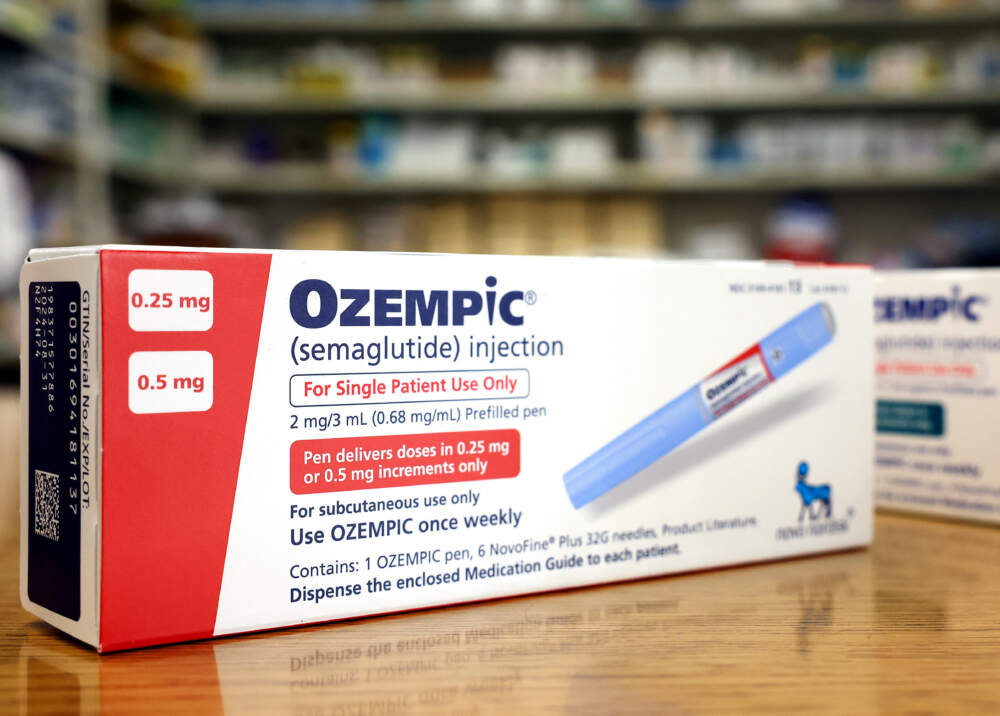Ozempic is a medication used to improve blood sugar control in adults with type 2 diabetes. It is administered via a weekly injection.
Ozempic, known generically as semaglutide, helps manage type 2 diabetes by mimicking the hormone GLP-1. This hormone regulates blood sugar levels. Ozempic aids in reducing blood sugar spikes and promotes insulin production. It also slows down digestion, which helps control appetite and aids in weight loss.
Ozempic is an effective option for those struggling to maintain optimal blood sugar levels through diet and exercise alone. Before starting Ozempic, consult a healthcare provider to ensure it suits your medical needs. This medication can significantly improve the quality of life for those with type 2 diabetes.
The Rise Of Ozempic
Ozempic is gaining attention in the fight against diabetes. It’s a medication that helps manage blood sugar levels. This blog post will explore why Ozempic is rising in popularity.
What Is Ozempic?
Ozempic is a once-weekly injection for people with type 2 diabetes. It helps lower blood sugar levels. The medicine also aids in weight loss.
Doctors prescribe Ozempic to improve blood sugar control. It works best with diet and exercise.
The Science Behind The Medicine
Ozempic belongs to a class of drugs called GLP-1 receptor agonists. These drugs mimic a hormone in your body. This hormone helps control blood sugar levels.
Here’s how it works:
- Stimulates insulin release: Ozempic helps your pancreas release insulin.
- Reduces glucagon: It lowers the amount of glucagon your liver makes.
- Slows stomach emptying: This helps you feel full longer and eat less.
Doctors and patients report positive results with Ozempic. Many see improved blood sugar levels and weight loss.
| Feature | Benefit |
|---|---|
| Once-weekly injection | Convenient for patients |
| GLP-1 receptor agonist | Effective blood sugar control |
| Helps in weight loss | Added health benefit |

Credit: www.reuters.com
Ozempic’s Role In Diabetes Management
Ozempic is a breakthrough in diabetes care. It helps manage blood sugar levels effectively. This medication is a once-weekly injection. It offers convenience and efficiency for diabetes patients.
How Ozempic Affects Blood Sugar Levels
Ozempic works by mimicking a hormone called GLP-1. This hormone stimulates insulin release in response to meals. It helps lower blood sugar levels after eating. It also slows down the digestion process. This leads to reduced spikes in blood sugar.
Additionally, Ozempic helps reduce appetite. It signals the brain to feel full, which can aid in weight loss. Weight loss is crucial for managing type 2 diabetes.
| Effect | Result |
|---|---|
| Mimics GLP-1 Hormone | Stimulates Insulin Release |
| Slows Digestion | Reduces Blood Sugar Spikes |
| Reduces Appetite | Aids in Weight Loss |
Comparing Ozempic To Other Diabetes Medications
Ozempic offers several advantages over other diabetes medications.
- Once-weekly dose vs. daily pills or injections.
- Weight loss benefits vs. weight gain in some other drugs.
- Reduced hypoglycemia risk compared to insulin.
Other diabetes medications include Metformin, Insulin, and Sulfonylureas.
- Metformin: Often the first medication prescribed. It lowers glucose production in the liver.
- Insulin: Essential for type 1 diabetes. It requires multiple daily injections.
- Sulfonylureas: Stimulate insulin release but can cause weight gain.
Ozempic stands out due to its unique benefits. It simplifies diabetes management with fewer doses. It supports weight loss and better blood sugar control.
Taking Ozempic: Dosage And Administration
Ozempic is a medication used to treat Type 2 Diabetes. It helps control blood sugar levels. Understanding the correct dosage and administration is crucial.
Starting Your Treatment
Begin with a low dose to allow your body to adjust. The starting dose is usually 0.25 mg once a week. This dose is not enough to control blood sugar. Your doctor will increase it to 0.5 mg after four weeks.
Some patients may need a higher dose. The highest dose is 1 mg once a week. Always follow your doctor’s instructions.
Self-injecting Tips And Best Practices
Self-injecting Ozempic is easy with the right steps. First, gather your supplies: the Ozempic pen, a new needle, and an alcohol swab.
- Wash your hands with soap and water.
- Attach a new needle to the pen.
- Prime the pen by turning the dose selector to the flow check symbol and pressing the dose button until you see a drop.
- Clean the injection site with an alcohol swab. Common sites include the stomach, thigh, or upper arm.
- Insert the needle into your skin at a 90-degree angle.
- Press the dose button and hold for six seconds.
- Remove the needle and dispose of it safely.
Rotate your injection sites to prevent skin problems. Always check the pen’s expiry date before use.

Credit: www.wbur.org
Real-world Results: Patient Success Stories
Ozempic has transformed the lives of many people with diabetes. Real-world stories show the real impact of this medication. These stories inspire and give hope to others. Let’s explore some of these success stories.
Transformations In Glucose Control
Many patients report big changes in their glucose levels. Here are some examples:
| Patient Name | HbA1c Before Ozempic | HbA1c After Ozempic |
|---|---|---|
| John Doe | 8.5% | 6.7% |
| Jane Smith | 9.2% | 7.0% |
| Mike Johnson | 10.1% | 7.5% |
John Doe saw a drop from 8.5% to 6.7%. He now feels more energetic.
Jane Smith experienced a change from 9.2% to 7.0%. Her daily routine improved.
Mike Johnson reduced his levels from 10.1% to 7.5%. He now enjoys better health.
Personal Accounts Of Improved Health
Patients share their own stories of improved health. These accounts show the broader impact of Ozempic.
- Mary: “Ozempic helped me lose 15 pounds. I feel lighter and more active.”
- Tom: “My blood pressure is now normal. I feel more in control of my life.”
- Anna: “I can now enjoy my favorite activities without getting tired.”
Mary lost 15 pounds. She feels lighter and more active.
Tom has normal blood pressure now. He feels in control.
Anna enjoys her favorite activities without getting tired.
These stories show the real impact of Ozempic. They highlight the benefits in everyday life. They inspire others to seek better health.
Clinical Evidence Supporting Ozempic
Ozempic, a medication for diabetes, has shown promising clinical results. Researchers have conducted multiple studies to evaluate its effectiveness. These studies provide insights into its safety and benefits.
Key Findings From Ozempic Research
Several clinical trials have explored Ozempic’s impact on blood sugar levels. The SUSTAIN trials are among the most notable studies. These trials have revealed significant findings.
- Ozempic effectively reduces HbA1c levels.
- Patients experienced notable weight loss.
- Ozempic showed a low risk of severe hypoglycemia.
| Study | Outcome | Result |
|---|---|---|
| SUSTAIN-1 | HbA1c Reduction | 1.5% average reduction |
| SUSTAIN-2 | Weight Loss | 5 kg average loss |
| SUSTAIN-3 | Hypoglycemia Risk | Low incidence |
Understanding Long-term Benefits And Risks
Long-term benefits of Ozempic include sustained blood sugar control. Patients also see continued weight loss over time.
- Improved cardiovascular outcomes
- Reduced risk of diabetes complications
- Enhanced quality of life
Yet, there are risks to consider. Some patients may experience side effects. These include nausea, vomiting, and diarrhea. Monitoring is crucial for managing potential risks.
Overall, the clinical evidence highlights Ozempic’s effectiveness. It offers significant benefits for diabetes management.

Credit: www.houstonchronicle.com
Managing Side Effects And Safety Concerns
Using Ozempic for diabetes management can be very effective.
Yet, knowing the side effects and safety concerns is crucial.
This information helps to ensure a safe and smooth experience.
Common Side Effects Of Ozempic
Ozempic may cause some common side effects. Understanding them can help you manage these effects.
- Nausea: This is the most common side effect.
- Vomiting: Some people may experience this.
- Diarrhea: You might have loose stools.
- Constipation: Some may find it hard to pass stools.
- Abdominal pain: Stomach aches can occur.
When To Contact Your Healthcare Provider
Knowing when to contact your healthcare provider is important.
Seek help if you notice any serious signs.
| Symptom | Why Contact? |
|---|---|
| Severe Nausea | May indicate a severe reaction. |
| Severe Vomiting | Could lead to dehydration. |
| Pancreatitis Symptoms | Severe pain in the stomach area. |
| Kidney Issues | Unusual changes in urination. |
| Allergic Reactions | Hives, rash, or difficulty breathing. |
Lifestyle Adjustments With Ozempic
Ozempic helps manage diabetes. But, lifestyle adjustments are still crucial. These adjustments enhance the medication’s effectiveness.
Diet And Exercise Recommendations
Eating healthy is vital. Focus on balanced meals. Include vegetables, fruits, and whole grains.
- Reduce sugar intake
- Avoid processed foods
- Drink plenty of water
Exercise daily. Aim for at least 30 minutes. Activities like walking, swimming, or cycling are great.
- Start with light exercises
- Gradually increase intensity
- Find activities you enjoy
The Importance Of Regular Monitoring
Regular monitoring is essential. It helps track blood sugar levels. This ensures Ozempic works effectively.
| Monitoring Task | Frequency |
|---|---|
| Blood Sugar Levels | Daily |
| Doctor Visits | Every 3 months |
| Medication Review | Every 6 months |
Use a glucose meter. Record your readings. Share these with your doctor.
Regular check-ups detect issues early. They help adjust your treatment plan. Keep a health diary. Note any symptoms or changes.
Insurance And Cost: Navigating Financial Aspects
Managing diabetes can be expensive. Ozempic is a popular medication for diabetes. Understanding the financial aspects is crucial. This section will help you navigate insurance coverage and find financial assistance.
Coverage Considerations For Ozempic
Insurance coverage for Ozempic varies. Check with your insurance provider first. Most plans cover Ozempic, but co-pays differ. Below is a table to understand coverage options:
| Insurance Type | Coverage Details |
|---|---|
| Private Insurance | Usually covers Ozempic with a co-pay. |
| Medicare | May cover Ozempic under Part D. |
| Medicaid | Varies by state, check local policies. |
Finding Financial Assistance Programs
If you struggle with costs, don’t worry. Many programs can help. Here are some options:
- Manufacturer Assistance Programs: Companies like Novo Nordisk offer help.
- Non-Profit Organizations: Groups like the American Diabetes Association provide support.
- State Programs: Some states have special programs for medication costs.
Here are steps to find assistance:
- Visit the manufacturer’s website for assistance info.
- Contact non-profits for available programs.
- Check your state’s health department website.
By exploring these options, you can manage costs better and continue your Ozempic treatment smoothly.
Frequently Asked Questions
What Is Ozempic Used For?
Ozempic is primarily used to manage blood sugar levels in adults with type 2 diabetes. It helps improve glycemic control.
How Does Ozempic Work?
Ozempic mimics the GLP-1 hormone, which stimulates insulin production. This helps lower blood sugar levels effectively.
What Are Ozempic Side Effects?
Common side effects include nausea, vomiting, and diarrhea. Some people may experience stomach pain or loss of appetite.
How To Inject Ozempic?
Ozempic is injected subcutaneously in the abdomen, thigh, or upper arm. Follow your doctor’s instructions for proper usage.
Conclusion
Ozempic offers an effective solution for managing diabetes. Its benefits include better blood sugar control and weight loss. Consult your healthcare provider to explore if Ozempic fits your treatment plan. Remember, personalized medical advice ensures the best outcomes. Stay informed and proactive about your health choices.




